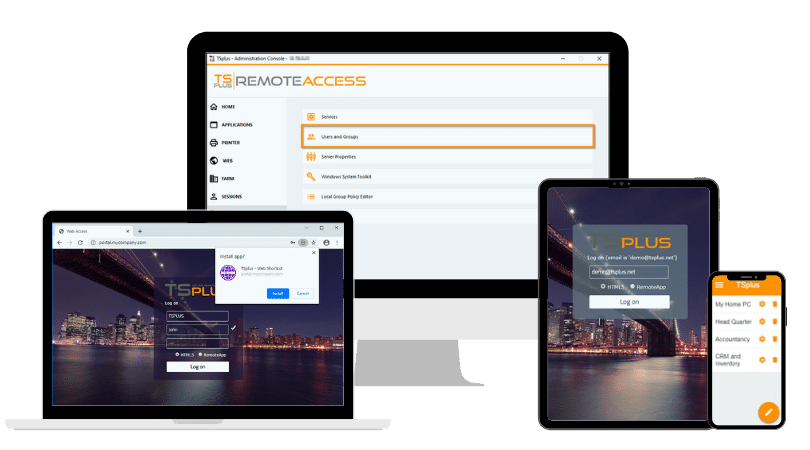)
)
Understanding RDP and Its Importance
Remote Desktop Protocol (RDP) is a proprietary protocol developed by Microsoft that enables users to connect to and control a remote computer over a network. This capability is invaluable for IT professionals managing remote servers, for remote workers accessing corporate systems, and for organizations maintaining centralized control over distributed networks. RDP allows users to view the remote desktop as if they were sitting directly in front of it, enabling them to run applications, access files, and manage system settings.
However, the convenience of RDP also presents significant security challenges. Unauthorized access, data interception, and malicious attacks can jeopardize sensitive information. For this reason, understanding how RDP encryption works and how it can be optimized is crucial for secure remote access.
Is RDP Encrypted by Default?
Yes, RDP sessions are encrypted by default. When an RDP session is established, data transmitted between the client and the remote server is encrypted to prevent unauthorized access and data interception. However, the strength and type of encryption can vary based on system configurations and the version of RDP in use.
RDP offers multiple encryption levels:
- Low: Encrypts only data sent from the client to the server. This is generally not recommended for secure environments.
- Client Compatible: Uses the maximum encryption level supported by the client, providing flexibility but potentially lower security.
- High: Encrypts data in both directions using strong encryption (typically 128-bit encryption).
- FIPS Compliant: Adheres to Federal Information Processing Standards (FIPS) for encryption, ensuring government-grade security.
Delving Deeper: How RDP Encryption Works
RDP encryption relies on a combination of secure protocols and authentication mechanisms:
Transport Layer Security (TLS):
TLS is the primary protocol used to secure RDP connections. It provides a secure channel for data transmission, protecting against eavesdropping and tampering. Modern RDP implementations support TLS 1.2 and TLS 1.3, both of which offer robust encryption.
Network Level Authentication (NLA):
NLA requires users to authenticate before a remote desktop session is established, significantly reducing the risk of unauthorized access. It is one of the most critical security features for RDP.
Other Encryption Methods Explained
Beyond TLS, various encryption methods are used to secure data in different contexts:
- Symmetric Encryption: Such as AES (Advanced Encryption Standard), DES (Data Encryption Standard) and ChaCha20, which is known for its speed and security in mobile and IoT environments.
- Asymmetric Encryption: Such as RSA (Rivest-Shamir-Adleman), ECC (Elliptic Curve Cryptography) and DSA (Digital Signature Algorithm). These are used for secure key exchange and digital signatures.
- Hashing Algorithms: Including SHA-256 (Secure Hash Algorithm), SHA-3, MD5 (now considered outdated) and BLAKE2, which are used for data integrity rather than encryption.
- Post-Quantum Encryption: Such as CRYSTALS-Kyber, CRYSTALS-Dilithium and FrodoKEM, which are resistant to attacks by quantum computers.
Most Secure TLS 1.3 Cipher Suites
For those implementing RDP with TLS 1.3, the following cipher suites are recommended for maximum security:
- TLS_AES_256_GCM_SHA384: Highest security, suitable for sensitive data.
- TLS_CHACHA20_POLY1305_SHA256: Ideal for mobile or low-power devices, offering strong security and performance.
- TLS_AES_128_GCM_SHA256: Balanced security and performance, suitable for general use.
Potential Vulnerabilities and Risks
Despite default encryption, RDP can be vulnerable if not properly configured:
- Outdated Protocols: Older versions of RDP may lack strong encryption, making them susceptible to attacks.
- Man-in-the-Middle Attacks: Without proper certificate validation, an attacker could intercept and manipulate data.
- Brute Force Attacks: Exposed RDP ports can be targeted by automated scripts attempting to guess login credentials.
- BlueKeep Vulnerability: A critical flaw (CVE-2019-0708) in older RDP versions that allows remote code execution if unpatched.
Best Practices for Securing RDP
- Enable Network Level Authentication (NLA) to require user authentication before establishing a session.
- Use Strong Passwords and Account Lockout Policies to prevent brute force attacks.
- Restrict RDP Access to trusted networks or via VPN.
- Keep Systems Updated with the latest security patches.
- Implement Multi-Factor Authentication (MFA) or Two Factor Authentication (2FA) for an additional layer of security.
- Use Secure TLS 1.3 Cipher Suites as recommended.
Enhancing RDP Security with TSplus
TSplus provides advanced solutions for securing RDP:
- TSplus Advanced Security offers IP filtering, brute-force protection and time-based access restrictions.
- TSplus Remote Access provides secure remote desktop solutions with built-in encryption and customizable security settings.
Harden Your RDP Security
1. Restrict Access with the IP Address Filtering and Geographic Protection Features
IP Address Filtering allows you to create allow/block lists to control who can access the server. Trusted IPs can be whitelisted, and suspicious or unwanted IPs blacklisted.
Country Restrictions geo-fence access based on the geographic location of the IP address. For example, you may block all RDP connections from countries where you have no users or business operations.
Benefits: Reduce exposure to global brute-force attacks and narrow your threat landscape.
2. Prevent Brute-Force Attacks with Brute-Force Defender
TSplus Advanced Security monitors failed login attempts and automatically blocks IP addresses that exhibit suspicious behavior, such as repeated login failures over a short period.
Benefit: Stop credential-stuffing and brute-force attacks before they can compromise accounts.
3. Control When Users May Connect via Working Hours Restrictions
You can define specific time slots during which users are allowed to log in via RDP. Attempts outside permitted hours are automatically blocked.
Benefit: Prevent unauthorized access attempts during off-hours when administrative staff may not be closely monitoring the system.
4. Use Hacker IP Protection and Global IP Reputation Database
TSplus Advanced Security maintains and synchronizes a global database of known malicious IP addresses. These are automatically blocked based on threat intelligence.
Benefit: Leverage global threat data to proactively defend against known cybercriminal infrastructures.
5. Enforce Least Privilege and Secure Configuration with Permissions Auditor
The Permissions tool gives you a clear overview of user rights and access levels. It simplifies the task of identifying over-privileged accounts and tightening security policies.
Benefit: Limit the potential for privilege escalation and accidental mis-configurations.
6. Receive Real-Time Alerts and Centralized Logging
The software logs all relevant security events and can be configured to notify administrators of suspicious activities. Logs can be exported or integrated with SIEM tools.
Benefit: Facilitate compliance reporting, incident response and forensic investigation.
7. Utilize the Endpoint Protection Feature
Endpoint Protection ensures that only authorized devices can connect to the server. When enabled, it requires administrators to approve any new device attempting a connection.
Benefit: Prevent unauthorized or unmanaged devices from accessing sensitive resources.
8. Security Events Dashboard and Easy Configuration
The web-based console provides a centralized dashboard where administrators can quickly review security events, apply policies, and adjust protection levels.
Benefits: Enhance visibility and simplify security management even across large environments.
Outcomes for Your RDP Security
By combining measures such as IP filtering, geo-restriction, brute-force defense, device trust management and privileged access monitoring, TSplus Advanced Security offers a practical and layered approach to securing RDP access. Specifically developed to protect your application servers, Advanced Security provides robust real-time security and sharp surveillance, affording you enterprise-grade protection without the complexity or cost associated with more heavyweight security solutions.
Conclusion: Is RDP Encrypted?
While RDP is encrypted by default, relying solely on default settings can leave systems vulnerable. Understanding RDP encryption, configuring it securely, and leveraging advanced solutions like TSplus are crucial for maintaining a secure remote desktop environment in today’s digital world.

TSplus Remote Access Free Trial
Ultimate Citrix/RDS alternative for desktop/app access. Secure, cost-effective, on-premises/cloud














)
)
)